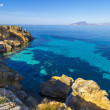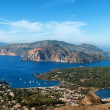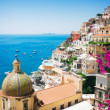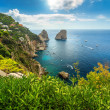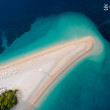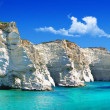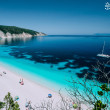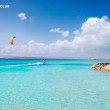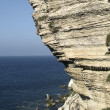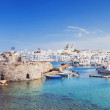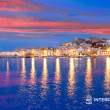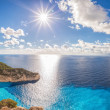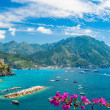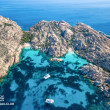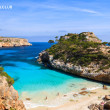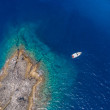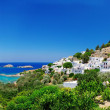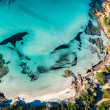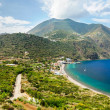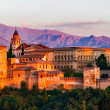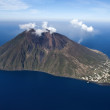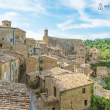
Lipari
First Impressions of Lipari: A Volcanic Island of Color and Contrast
The moment Lipari emerges from the sea, it strikes with its contrasts: dark volcanic cliffs plunging into brilliant turquoise waters, whitewashed houses clinging to the slopes, and vibrant fishing boats bobbing in the harbor. This is the beating heart of the Aeolian Islands—a destination that balances raw natural power with a laid-back island rhythm.
Unlike some of its quieter neighbors, Lipari pulses with activity. The main town is a lively mix of local life and visitor curiosity, with cafés lining the marina, boutique shops tucked along ancient alleys, and a breezy promenade ideal for morning strolls. Yet, within minutes from the port, you’re surrounded by untamed beauty—wild coves, black-sand beaches, and obsidian rocks shaped by millennia of eruptions and erosion.
Things to do in Lipari range from cultural visits to the island’s archaeological museum—one of the most important in the Mediterranean—to hikes up Monte Gallina for sweeping views of the archipelago. Nearby, the pumice quarries at Porticello shimmer like snow against the sea, with their pale dust blending into cobalt-blue shallows. This unique mix of human history and volcanic terrain defines the Lipari travel guide experience.
Swimmers and snorkelers will find plenty of quiet spots along the coast, while food lovers can sample the island’s strong flavors—from capers and malvasia wine to freshly caught swordfish. Whether you're crafting a Lipari itinerary for a day trip or a weeklong escape, the island offers a rich variety of landscapes and moods.
As with all the Aeolian Islands, the sea is the real key to Lipari. Many of its best sights—like the Faraglioni sea stacks, thermal caves, and hidden pebble beaches—are only fully appreciated from the water. The coastline isn't just a border—it's an invitation to slow down, observe, and discover. And soon, you’ll realize that Lipari doesn’t just ask to be visited. It asks to be explored.



Tides of Culture: The Living Heritage of Lipari
Lipari’s cultural identity is anchored in the sea. For thousands of years, its shores have welcomed navigators, merchants, and settlers—from prehistoric peoples to the Greeks, Romans, and Normans—each leaving visible and intangible traces behind. This layered past is not confined to museums or ruins; it’s woven into the rhythms of daily life, visible in coastal architecture, traditional crafts, and the stories still told by those who live with the tides.
The island’s archaeological richness is best experienced at the Lipari Archaeological Museum, housed in an old fort overlooking the harbor. Here, ancient amphorae, ship remnants, and obsidian tools recovered from the seabed reveal the deep maritime history that shaped not only Lipari but the entire Aeolian archipelago. Lipari history unfolds in layers: volcanic origins, Greek commerce, Roman trade routes, and Spanish rule all contributing to the island’s strategic and cultural relevance.
Yet beyond the curated exhibits, it’s the life of Lipari today that connects visitors with its legacy. In the fishing village of Marina Corta, locals still head out in wooden boats at dawn. The harbor cafes fill with conversations in dialects shaped by centuries of seafaring contact. Walk the coastal paths and you’ll spot votive shrines to sea saints, hand-painted tiles narrating maritime blessings, and hillside terraces where caper farmers overlook the same waters their ancestors sailed.
The influence of the sea is also deeply felt in Lipari’s cuisine, where catch-of-the-day recipes—like spaghetti with totani or grilled swordfish—are passed down like oral history. Even island festivals reflect a strong coastal spirit, often centered around the port, with processions and celebrations staged against a backdrop of anchored boats and sunset-lit waters.
What cultural influences shape Lipari's identity?
They are the echoes of past civilizations mixed with the ongoing dialogue between sea and shore. In Lipari, culture isn’t static—it sails, swims, cooks, sings, and lives in the open air.
Weather Rhythms: Navigating Lipari’s Climate by Sea
June is the hottest month in Havana with an average temperature of 27°C (81°F) and the coldest is January at 21°C (70°F) with the most daily sunshine hours at 11 in July. The wettest month is June with an average of 80mm of rain. The best month to swim in the sea is in August when the average sea temperature is 30°C (86°F).
Check all Statistics in AccuweatherAll destinations in Mediterranean Sea
-

-

-

-

-

-

-

-

-

-

-

-

-

-

-

-

-

-

-

-

-

-

-

-

-

-

